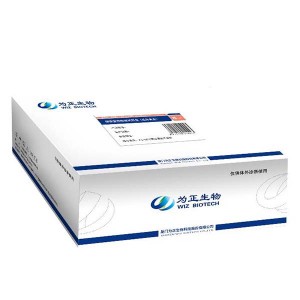Recent evidence suggests that incorporating MRI in the investigation of those with a positive PSA test result decreases the false positive rate, and thus the number of patients undergoing unnecessary biopsies, and may also increase the accuracy of biopsies in those who do have prostate cancer. The Rapid Recommendations panel considered addressing this issue in the guideline, but the impact of MRI on long term outcomes of prostate cancer incidence, mortality, and complications of treatment remains uncertain. Sophisticated decision modelling might shed light on this issue, but the panel decided not to conduct such an analysis because of logistic and feasibility considerations, and because the panelâs review of the evidence suggests that modelling would introduce further uncertainties regarding the impact of MRI on patient-important outcomes.
His research, clinical practice, and participation in guideline panels serve to bring research developments into focus as effective health care interventions that improve the health of people suffering from breathing disorders.
Flow cytometry was performed as previously described13. Abs to Ly6-G (RB6-8C5), CD45 (30-F11), IL-17A (eBio17B7), F4/80 (BM8), CD11b (M1/70), CD11c (HL3), MHC-II (AF6-120.1), were obtained from BD Biosciences or eBioscience. Anti-IFN-γ antibody (AN18) was kindly provided by Dr. Michael Basler. Cells were acquired with the use of the BD AccuriTM C6 flow cytometer system and pregated on living cells according to FSC/SSC signal.
p53 is required for DNA damage-mediated stimulation of LMP1. (A) DNA damage-stimulated LMP1 protein expression. EBV-transformed cell lines, IB4, SavIII, and P2, were treated with 5-FU (20 μM), Ara-C (20 μM), or X-ray irradiation (4 Gy) as indicated. Cell lysates were collected at increasing time periods after treatments (in hours). The expression of target proteins was detected by Western blot analysis. The intensities of the target signals were measured by a Bio-Rad ChemiDoc MP imaging system, and the relative LMP1 level (LMP1/GAPDH) is as shown. ##, the GAPDH area may have had a transfer problem, and the time point is omitted for calculation. (B) Quantitation of DNA damage-stimulated LMP1 expression. All the results from 3 to 5 h of treatment with DNA-damaging agents (drugs or X-ray treatments) were used to calculate the average LMP1 induction. Relative LMP1 protein expression levels are shown, and error bars indicate standard deviations. **, P < 0.01. A Student t test was performed with Microsoft Excel. (C) p53 is required for DNA damage-mediated stimulation of LMP1 protein. (Left) NH32 and TK6 cells were treated with 4.0 Gy of X-ray irradiation. Samples were collected at the indicated times posttreatment (in hours). (Right) NH32 and TK6 cells were treated with 5-FU (0, 5, and 20 μM) for 7 h. Western blotting was used for detection of specific proteins. (D) Quantitation of DNA damage-stimulated LMP1 RNA in p53-positive and -negative cell lines. NH32 and TK6 cells were irradiated with X-ray treatment (4 Gy) for 3 h. Total RNA was isolated and real-time RT-PCR was used to quantify both LMP1 and GAPDH transcripts. Relative LMP1 abundances were calculated with the use of 2âÎÎCT methods. The relative increases of LMP1 RNA after X-ray treatments (+/â X-ray) were calculated. Error bars indicate standard deviations. **, P < 0.01.

TLR4 appears to be the principle PRR for Mrp8, as demonstrated by a nearly completely absent TNF-α and IL-6 response in mMrp8-stimulated TLR4-deficient macrophages and the stimulatory effect of hMrp8 on TNF-α response was almost completely abrogated by a specific anti-TLR4 mAb in human monocytes. However, there was also a relative reduction in TNF-α release from mMrp8-stimulated TLR2-deficient macrophages compared with wild-type macrophages, stimulation with hMrp8 led to a strong NF-κB activation in HEKhTLR2 cells as seen in HEKhTLR4 cells, and a specific anti-TLR2 mAb significantly attenuated hMrp8-stimulated TNF-α release from human monocytes, indicating that TLR2 contributes to Mrp8-stimulated inflammatory response. Notably, the self-tolerising effect of mMrp8 in TLR2-deficient macrophages was substantially diminished with less attenuation in TNF-α and IL-6 release compared with wild-type macrophages. Moreover, while mMrp8-induced cross-tolerance to BLP was almost completely lost in TLR4-deficient macrophages, mMrp8-induced cross-tolerance to LPS was also impaired in TLR2-deficient macrophages. These results suggest that TLR2 is required for Mrp8-induced self-tolerance and cross-tolerance. Taken together, our findings support the notion that in addition to TLR4, TLR2 is also involved in Mrp8-induced inflammatory response and tolerance.
Butticaz, C., Michielin, O., Wyniger, J., Telenti, A. & Rothenberger, S. Silencing of both beta-TrCP1 and HOS (beta-TrCP2) is required to suppress human immunodeficiency virus type 1 Vpu-mediated CD4 down-modulation. J Virol 81, 1502–1505 (2007).
@Annie Robbins, just wanted to send a ☺️ and
In the current study, silencing miR-155 reduced both cardiac damage and mortality during CVB3-induced VM, indicating that miR-155 signaling contributes to an adverse rather than beneficial immune activation in the context of VM. In the absence of miR-155, activation of spleen CD4+ and CD8+ T cells decreased, as did proliferation of spleen CD4+ T cells, although absolute as well as proportional numbers of CD4+ T cells were not changed.

Dong, W. B., Wu, B. L. & Zhu, M. H. Clinical efficacy and functional characteristics of toad venom preparation. Chin Med Pharm J. 2, 26–27 (2003).
Martinez, F. O., Helming, L. & Gordon, S. Alternative activation of macrophages: an immunologic functional perspective. Annu Rev Immunol. 27, 451–483 (2009).
One major concern in drug development is the specificity of the compounds toward the target. In the context of IMB-LA, one issue is whether this compound exerts a general effect on the endosomal/lysosomal pathway by which Vpu degrades BST-2, especially given that the H + ATPase inhibitor ConA is able to prevent Vpu from down-regulating BST-2 by blocking the lysosomal pathway. This possibility was refuted by the results showing that IMB-LA did not affect the degradation of IFNAR1 in response to IFNα (Fig. 2). IFNAR1 is recognized by β-TrCP2 that recruits E3 ligase to IFNAR1 through binding to the phosphor-motifs DpSGXXpS in its substrate. Therefore, IMB-LA does not likely exert a general impact on lysosome-dependent protein degradation.
But how about the benefits of early detection? Alas, they did not materialize. Very large trials (including the PLCO study, with over 75,000 participants) showed that routine PSA screening did not prevent any deaths. The only study to show any benefit, ERSPC, had serious flaws, as explained by Ian Haines and George Miklos in the Journal of the National Cancer Institute.
Alleviating the agony and the angst of prostate cancer over-diagnosis Australian Financial Review Australian Financial Review | Diagnostic Kit For Isoenzyme Mb Of C Reatine Kinase Related Video:
Our pursuit and company goal is to "Always satisfy our customer requirements". We continue to develop and design superior quality products for both our old and new customers and achieve a win-win prospect for our clients as well as us for Biochemistry Analyzer , Tf , Rotavirus Test Kit , We offer OEM services and replacement parts to meet the varying needs of our customers. We offer competitive price for quality products and we will make certain your shipment is handled quickly by our logistics department. We sincerely hope to have the opportunity to meet with you and see how we can help you further your own business.







